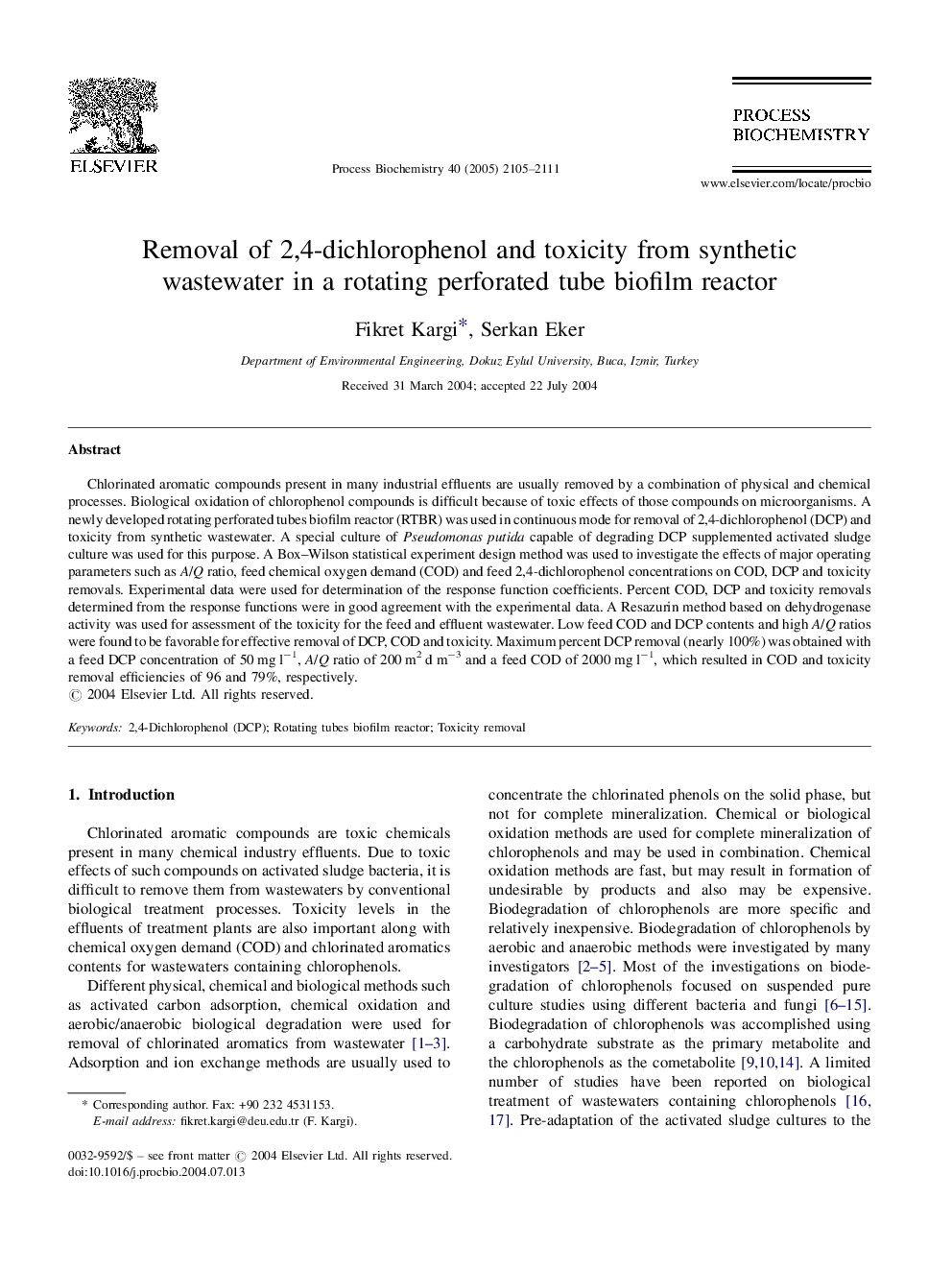| کد مقاله | کد نشریه | سال انتشار | مقاله انگلیسی | نسخه تمام متن |
|---|---|---|---|---|
| 36691 | 45142 | 2005 | 7 صفحه PDF | دانلود رایگان |

Chlorinated aromatic compounds present in many industrial effluents are usually removed by a combination of physical and chemical processes. Biological oxidation of chlorophenol compounds is difficult because of toxic effects of those compounds on microorganisms. A newly developed rotating perforated tubes biofilm reactor (RTBR) was used in continuous mode for removal of 2,4-dichlorophenol (DCP) and toxicity from synthetic wastewater. A special culture of Pseudomonas putida capable of degrading DCP supplemented activated sludge culture was used for this purpose. A Box–Wilson statistical experiment design method was used to investigate the effects of major operating parameters such as A/Q ratio, feed chemical oxygen demand (COD) and feed 2,4-dichlorophenol concentrations on COD, DCP and toxicity removals. Experimental data were used for determination of the response function coefficients. Percent COD, DCP and toxicity removals determined from the response functions were in good agreement with the experimental data. A Resazurin method based on dehydrogenase activity was used for assessment of the toxicity for the feed and effluent wastewater. Low feed COD and DCP contents and high A/Q ratios were found to be favorable for effective removal of DCP, COD and toxicity. Maximum percent DCP removal (nearly 100%) was obtained with a feed DCP concentration of 50 mg l−1, A/Q ratio of 200 m2 d m−3 and a feed COD of 2000 mg l−1, which resulted in COD and toxicity removal efficiencies of 96 and 79%, respectively.
Journal: Process Biochemistry - Volume 40, Issue 6, May 2005, Pages 2105–2111